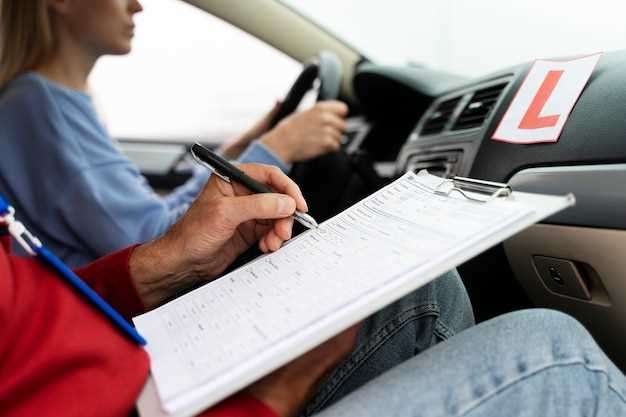
When it comes to selling your car, having the right paperwork is essential to ensure a smooth and legal transaction. The process of transferring ownership involves several key documents that both the seller and buyer must understand. Failing to prepare these documents can lead to complications, such as delays or disputes.
The most important document you will need is the vehicle title. This legal document proves your ownership of the car and is required for transferring the title to the new owner. Ensure that the title is free of any liens and that your name is clearly listed as the seller. If you have lost the title, obtaining a duplicate from your local Department of Motor Vehicles (DMV) is crucial before proceeding further.
In addition to the title, you will also need to gather any other necessary forms for the transfer of ownership, which may include a bill of sale and a vehicle history report. A bill of sale acts as a receipt for the transaction and provides proof of sale for both parties. Be sure to check your state’s specific requirements to ensure that you have all the appropriate documentation in place.
Understanding the Vehicle Title and Its Importance
The vehicle title is a crucial document in the process of selling your car. It serves as proof of ownership and legally verifies that you have the right to sell the vehicle. Without a clear title, transferring ownership becomes problematic, and potential buyers may be discouraged from proceeding with the transaction.
A title contains important information, including the vehicle’s identification number (VIN), make, model, year, and any lien information. When selling your car, it’s essential to ensure that the title is free of liens, meaning that any outstanding loans against the vehicle have been paid off. This step is vital to prevent any future disputes regarding ownership after the sale.
When preparing for the sale, you must complete the necessary paperwork associated with the title transfer. This process typically requires both the seller and the buyer to sign the title, along with possibly filling out additional forms as required by your state. It’s important to check your local regulations, as they can vary significantly regarding title transfers and associated fees.
In summary, understanding the vehicle title and its significance is key when selling your car. Ensuring you have the correct paperwork in order not only facilitates a smooth transfer of ownership but also helps build trust with potential buyers.
Gathering Record of Maintenance and Sales Documents

When preparing to sell your car, gathering all necessary paperwork is crucial. This includes the record of maintenance which outlines all the services performed on the vehicle. A well-documented maintenance history can enhance the value of your car and instill confidence in potential buyers.
Start by collecting receipts from all service appointments, oil changes, tire rotations, and any repairs completed. These documents should detail the date of service, the type of work done, and the service provider’s information. Having this paperwork organized can help you prove the car’s reliability and care over the years.
In addition to maintenance records, make sure you have all relevant sales documents ready for the transfer of ownership. This includes the vehicle title, which must be signed over to the new owner. Ensure that any liens are cleared to prevent complications during the sale process.
Also, consider including a bill of sale that outlines the terms of the transaction, the condition of the car, and the agreed sale price. This document helps establish a clear understanding between you and the buyer, protecting both parties involved in the transaction.
Having all these documents available not only streamlines the sale process but also builds trust with the buyer, ultimately facilitating a smoother transfer of ownership.
Steps for Completing a Title Transfer with the Buyer

Completing a title transfer is a crucial step when selling your car. This process ensures that the ownership legally shifts from the seller to the buyer. Follow these steps to streamline the title transfer procedure.
1. Gather Necessary Paperwork: Before initiating the title transfer, collect all required documents. This typically includes the vehicle’s title, a bill of sale, and any additional forms mandated by your state’s Department of Motor Vehicles (DMV) or equivalent authority.
2. Fill Out the Title: The vehicle title contains a section that must be completed by both the seller and the buyer. Accurately fill out all pertinent information, including the odometer reading and sale price. Ensure that both parties sign the title to validate the transfer.
3. Verify State Requirements: Different states may have distinct regulations regarding title transfers. Consult your local DMV to confirm any specific forms needed, such as a title transfer application or emissions test certificates. Compliance with state regulations is essential.
4. Complete a Bill of Sale: While not always mandatory, a bill of sale is a smart addition to the process. This document outlines the sale details and acts as proof of the transaction, including the date, purchase price, and both parties’ contact information.
5. Submit the Paperwork: Once the title and bill of sale are filled out, both the seller and buyer should submit the required paperwork to the DMV. The buyer typically handles this step, ensuring that the title transfer is officially recorded.
6. Pay the Transfer Fee: Most states impose a fee for processing the title transfer. The buyer is usually responsible for this fee, which can vary by state. Ensure this payment is made to avoid delays in the transfer process.
7. Obtain Confirmation: After submitting the paperwork, request confirmation of the title transfer. The DMV may provide a receipt or updated title indicating the change of ownership, serving as proof that the transaction is complete.
Following these steps will help you successfully complete a title transfer with the buyer, ensuring a smooth transaction and protecting both parties involved.






